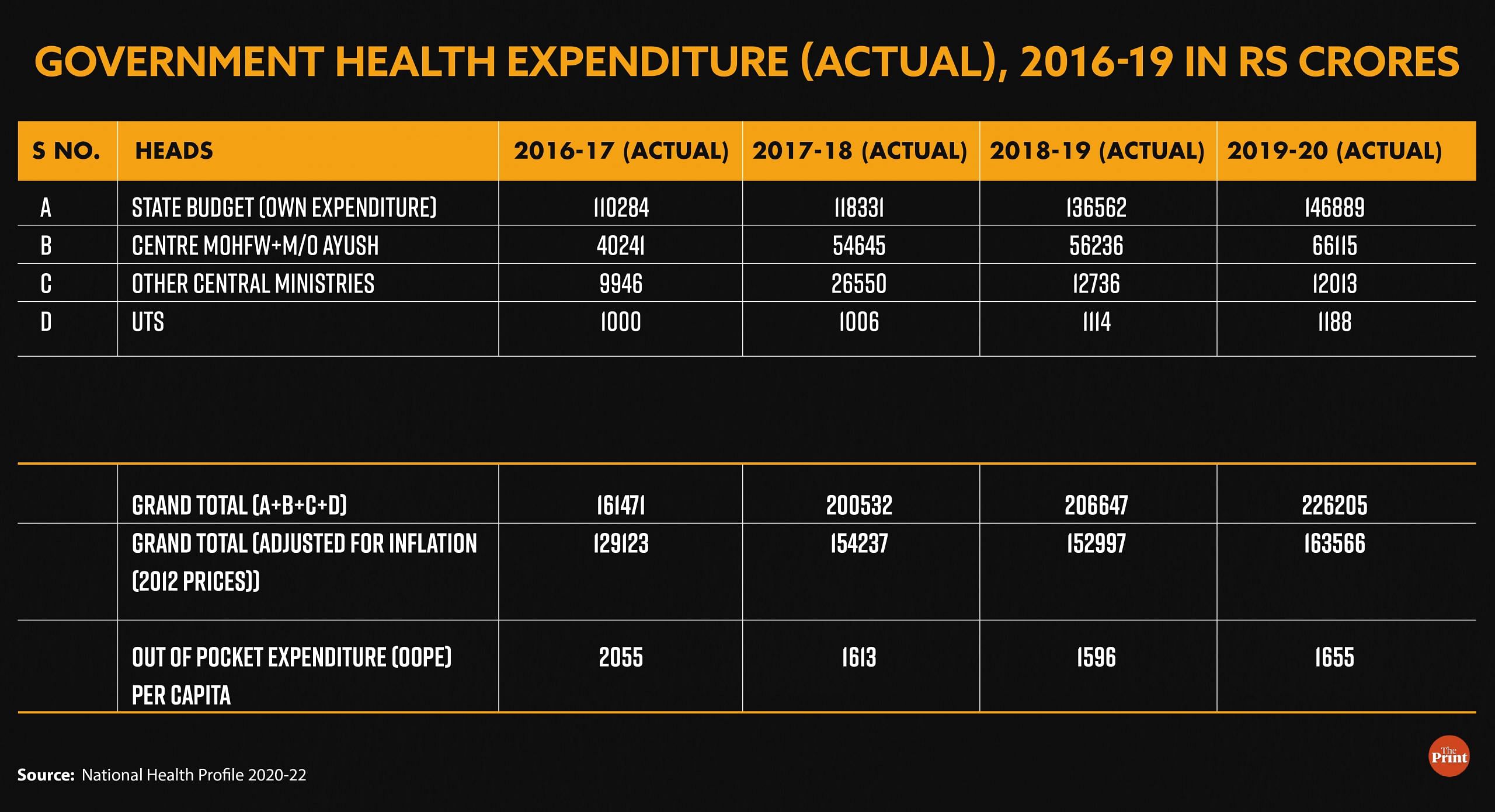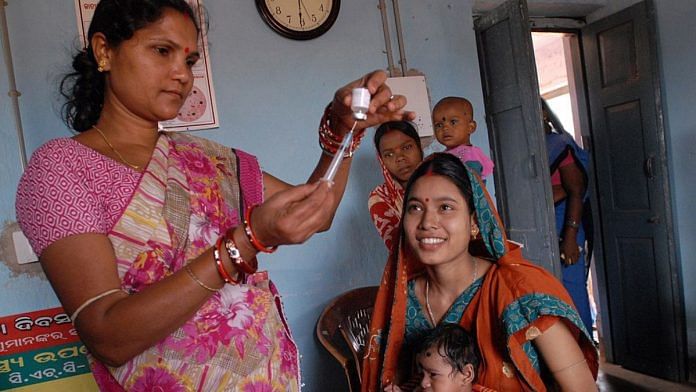The recently released National Health Accounts for 2019-20 reveal a consistent decline in out-of-pocket expenditures on healthcare, which has been a positive trend since 2014. The accounts also highlight an increase in government expenditure on health. Both are welcome trends and could suggest that increases in government health expenditure have led to a decline in out-of-pocket expenditure. However, a closer examination of the data at the national level and across states suggests the need for further analysis as the connection between increased government spending and declining out-of-pocket expenditures may not be immediately apparent.
When analysing the trend of government health expenditure (GHE) from 2014 to 2020, it becomes evident that it has consistently increased at the all-India level, adjusted for 2012 prices. It rose from Rs 936 per capita in 2014 to Rs 1,456 in 2019, with a notable jump from Rs 1,134 to Rs 1,348 between 2016 and 2017. Simultaneously, per capita out-of-pocket expenditures (OOPE) (adjusted for 2012 prices) decreased at the national level from Rs 2,021 in 2014 to Rs 1,655 in 2019, with a significant decline from Rs 2,055 to Rs 1,613 between 2016 and 2017. While this may suggest that OOPE declined due to increased government spending on health, after adjusting for inflation, both actual GHE and OOPE increased between 2017-18 and 2019-20 (Table 1). This raises the need for a deeper investigation into the precise link between the two.

Additionally, a cross-state analysis tells a different story compared to the national average. Disaggregated analysis reveals that not all states experienced an increase in GHE between 2018-19 and 2019-20. Five out of 21 states witnessed a decline in per capita GHE during this period, including Jharkhand and Rajasthan from the Empowered Action Group (EAG) states. Jammu and Kashmir, Karnataka, and Tamil Nadu — non-EAG states — also experienced a decline in GHE. Bihar, Gujarat, and Kerala saw only marginal increases. Further analysis of trends demonstrates a general decline in OOPE between 2014 and 2020, regardless of changes in GHE.
Therefore, both national and state-level disaggregated data raise questions regarding the assumption that increasing GHE leads to decreasing OOPE on health. The increase in GHE at the national level between 2017-18 and 2019-20, adjusted for inflation, is actually positively associated with the increase in OOPE during this period. Similarly, at the state level, most states show an increase in OOPE alongside increasing GHE, except for Chhattisgarh, Himachal Pradesh, Andhra Pradesh, and Telangana, where OOPE has declined despite increasing GHE. This suggests that the relationship between the two factors requires careful scrutiny.
An analysis of the significant deviation from the overall secular trend observed from 2016-17 to 2017-18 indicates a decrease in overall hospitalisation in 2017-18, which could explain the substantial decline in OOPE during that period.
Further analyses
The overall utilisation of the inpatient health services, within the last 365 days prior to the survey, decreased by 16 per cent between 2014 and 2018. When excluding hospitalisation due to childbirth, this number rises to 23 per cent during the same period.
Additionally, data from the National Sample Survey Organisation for 2014 and 2018 (NSSO 2016 and NSSO 2020) reveals an increase in the proportion of ailing individuals who did not seek any medical advice (in last 15 days prior to the survey) in various states — Madhya Pradesh (increase from 9 to 11 per cent), Odisha (17 to 22 per cent), Himachal Pradesh (5 to 10 per cent), Uttarakhand (13 to 22 per cent), Jammu and Kashmir (8 to 12 per cent), Karnataka (6 to 14 per cent), Maharashtra (6 to 8 per cent), Assam (minimal), and Bihar (minimal) during 2014 and 2018.
Further analysis of the data has indicated a rise in the percentage of people — from 60 to 74 — who do not consider their ailments as serious, leading them to forgo seeking medical advice. These data points suggest a decline in healthcare access during this time, which could be one of the reasons for the decline in OOPE. This observation aligns with other research studies that highlight the possible role of income insecurity in contributing to the decision to forego healthcare services.
Alok Kumar is a Research Associate and Sandhya Venkateswaran a Senior Fellow at Centre for Social and Economic Progress. Views are personal.
(Edited by Humra Laeeq)



